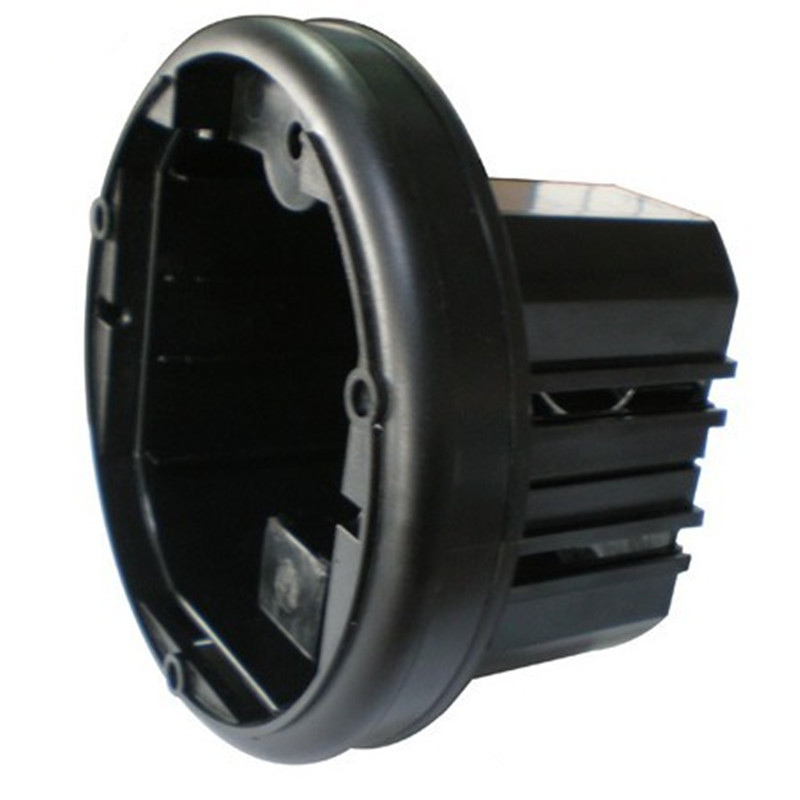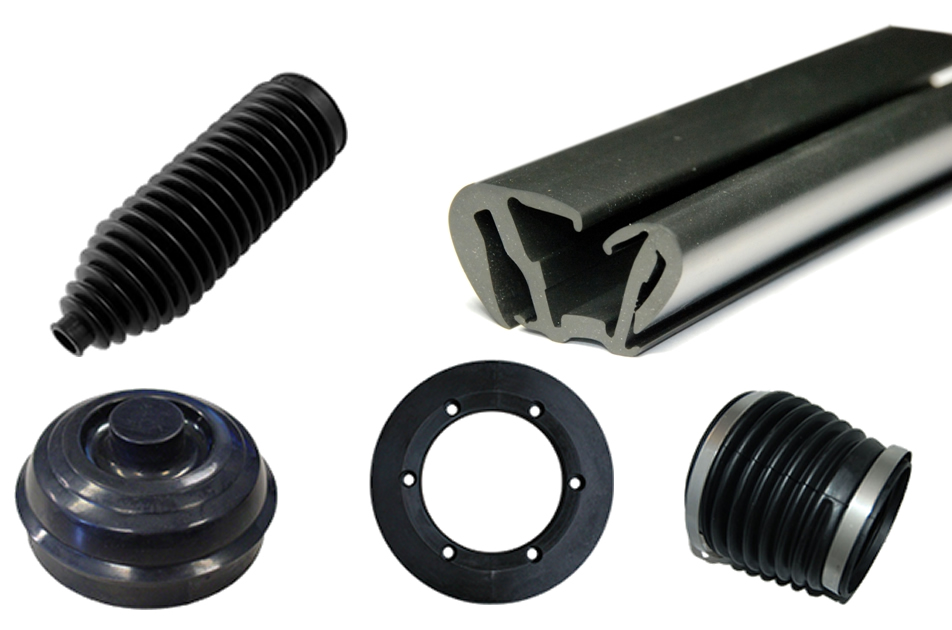In recent years, with the rapid development of industrial alumina, bauxite mining volume of China also increased year by year, but still can not meet domestic bauxite production of alumina production needs, resulting in the proportion of bauxite imported from abroad grew rapidly, aluminum external resources The degree of dependence has increased significantly, seriously affecting the strategic security of China's aluminum industry. On the other hand, the resource reserves of high- speed iron bauxite mines in China are as high as more than one billion tons. With the advancement of technology, the development and utilization of high-speed bauxite mines will be a strong guarantee for the sustainable development of China's alumina industry.
The iron-bearing minerals of high-iron bauxite exist in the form of hematite, goethite, limonite, etc., and aluminum minerals exist in the form of gibbsite, boehmite and diaspore. Among them, high-speed rail three-water bauxite is widely distributed in Guigang, Guangxi, and other high-speed rail-bearing bauxite-type bauxite deposits are distributed in Guixi, Yunnan Wenshan, Suizhong, Shanxi Baode and Henan Gongyi. At present, the difficulty in the utilization of high-speed iron bauxite is how to achieve high-efficiency, low-consumption and pollution-free aluminum-iron separation.
1 Research status of separation of aluminum and iron from high-iron bauxite
1.1 beneficiation method
The ore dressing method uses physical and chemical methods to make separation and enrichment by using the difference in the optional properties of iron minerals and aluminum minerals, and obtain concentrate products suitable for industrial production, mainly including re-election, magnetic separation, flotation, and electricity. Selective, flocculation and strong magnetic separation-anion reverse flotation and other mineral processing techniques.
Central South University conducted a direct magnetic separation and iron removal process on the Pingguo Na bean mine in Guangxi. After magnetic separation, the Fe2O3 content in the aluminum magnetic material decreased to 6.97% to 8.59%, and the A/S increased from 9.52 to 11.06 to 11.63. Grzymek uses high-iron high-alumina bauxite produced in the Legnica region of Poland as raw material, using crushing, sieving, shaker sorting, classification, magnetic separation and other methods to obtain aluminum concentrate containing Al2O334% and Fe2O37% and Fe2O360%. TiO220% titanium iron ore.
The first method is to realize the full cleavage of the aluminum-iron mineral in the ore. For the high-iron bauxite ore with simple mineral size, it can not only separate the iron-aluminum, but also improve the grade of the iron-aluminum mineral. Simple and effective economic approach. However, the iron ore minerals in the high-iron bauxite mine are finer in size, the symbiotic relationship between iron-aluminum minerals is complex, tightly embedded, the geochemistry and crystal chemical behavior are similar to iron and aluminum, and the isomorphic substitution is more common. The method is to recover aluminum-iron from such ore. The rate is low, the loss of useful components is large, and the separation effect is poor.
1.2 Magnetization roasting method
The magnetization roasting method uses a reducing gas or coal as a reducing agent to reduce the iron minerals in the bauxite to a ferromagnetic magnetite, and magnetically separates the magnetite to obtain an iron concentrate and a high grade. Aluminum concentrate.
The Zhengzhou Institute of Minerals Comprehensive Utilization used the magnetization roasting-magnetic separation process of Al2O3 49.76%, SIO2 4.9%, A/S 10.16, Fe2O328.23% bauxite.
The process crushes the ore to less than 5 mm, the amount of coke is 25%, and the calcination temperature is 780 ° C, and the calcination time is 4.5 hours. The roasting ore is subjected to grinding and magnetic separation to obtain Al2O3 60.28%. The TFe10.25% bauxite concentrate has an alumina recovery of 70.26%, a magnetite concentrate with a TFe content of 56.35%, an iron recovery of 42.89%, and an alumina content of over 20%.
The problem with this method is that the iron-aluminum minerals have a large loss during the magnetic separation process, and the recovery rate is low. Whether the aluminum content in the iron concentrate or the iron content of the aluminum concentrate exceeds the standard, it cannot meet the requirements of industrial application.
1.3 Direct reduction method
Direct reduction method is employed as the reducing agent gas or coal, under conditions of a solid reduced iron ore minerals for metal state, after magnetic separation of iron and aluminum to achieve a metal concentrate.
Hu Sichun et al. conducted a pilot study on the medium-temperature metallization roasting-magnetic separation process of the Baode-diaspore-type high-iron bauxite mine in Shanxi. The grade of aluminum concentrate was >60%, the recovery of alumina was >70%, and the iron concentrate TFe The grade is >80%, the TFe recovery rate is >60%, and the aluminum-iron products have reached the grade of industrial utilization, but the recovery rate is at a low level.
Due to the fine iron mineral particles in the high-iron bauxite ore, it is difficult to polymerize and grow the metal iron grains after direct reduction, and the magnetic separation effect is poor. Therefore, some researchers have added sodium salt to promote iron ore in high-iron high-silicon bauxite. Additives for reduction of materials and growth of iron grains, metallization reduction roasting at relatively high temperature (900-1100 ° C), magnetic separation to obtain high-grade sponge iron powder and aluminum-rich non-magnetic materials, through magnetic The sponge iron was selected and separated, and the aluminum concentrate was dissolved by Bayer method. Zhu Zhongping conducted a direct reduction-magnetic separation test on Guangxi high-iron gibbsite bauxite. In the test, by adding a certain proportion of sodium salt additives, the recovery rate of iron and aluminum was greatly improved. TFe93.73%, Al2O3 1.21% magnetic material and TFe 6.73%, Al2O340.56% non-magnetic product, iron recovery rate of 93.07%, iron-aluminum mineral recovery and concentrate grade compared with no added sodium salt A large increase.
Direct reduction roasting of high-iron bauxite can achieve better separation effect of aluminum and iron to a certain extent. The addition of sodium salt promotes the crystallization of metallic iron, which can enhance the effect of reduction and magnetic separation.
1.4 Bayer method
The Bayer method is mainly for the high-iron gibbsite mine. The ore is firstly dissolved by the Bayer method to extract the alumina, and the iron is recovered from the red mud by beneficiation or acid dissolution. The research on Bayer's dissolution has been relatively mature, so the research mostly focuses on the recovery of iron from red mud.
Chen De and Xu Shutao carried out the Bayer process dissolution-red mud iron selection study on the high-speed rail Sanshui bauxite mine. The recovery rate of alumina can reach 53%~58%; the red mud is blended with reduced coal and burned coal to form and dry. Reduction roasting, magnetic separation, iron recovery rate of more than 80%, the obtained sponge iron powder can be used for pelletizing and steelmaking; Liu Peiwang et al. use wet high gradient pulsating magnetic separation to process a Bayer red mud, which can be obtained TFe An iron concentrate with a content of 54% to 56%, which can be used for blast furnace ironmaking. Chen Shiyi dissolved the Guangxi high-speed rail gibbsite mine under normal pressure, low temperature and low alkali concentration for about 10 minutes. The dissolution rate of gibbsite mineral was higher than 90%. The red mud was mixed with coal powder and pressed and dried. The rotary kiln is reduced and calcined, and then crushed, magnetically selected and formed into a sponge iron agglomerate. The total iron grade and metallization rate of the product are both higher than 90%, and the iron recovery rate is greater than 85%.
Bayer method is suitable for the treatment of gibbsite ore with high aluminum to silicon ratio (A/S>7). The quality of ore is high, and in high-iron trihydrate bauxite, Al2O3 is not only in the form of gibbsite, sometimes There will be a mixture of diaspore and boehmite, and the Bayer process can only dissolve Al2O3 in the form of gibbsite at normal pressure leaching. The leaching rate of Al2O3 is low, and the loss of Al2O3 in the ore is large during the leaching process. Al2O3 dissolved in Fe2O3 cannot be separated, resulting in higher Al2O3 content in iron concentrate.
1.5 acid method
The acid method utilizes the difference in the ability of iron and aluminum to dissolve in acid under different conditions. The salt crystals of iron and aluminum are separated by the order of evaporation and crystallization of iron and aluminum salt solution, and then alumina and iron oxide are obtained by thermal decomposition.
Zhang Ting'an and others from Northeastern University used the acid method to study the separation of aluminum and iron from high-iron bauxite. The ratio of aluminum to silicon in the ore was 1.5-5, and the content of TFe was 30%. The ore was crushed and placed in a closed container, after leaching and extraction. The steps of separating, heating and pyrolysis are carried out to obtain alumina and iron oxide products, and the hydrogen chloride gas volatilized is collected for recycling. 91.58% of alumina can be effectively leached, the leaching rate of iron is as high as 95.42%, the recovery rate of iron and aluminum reaches a high level, and SiO2 is concentrated in the leaching slag obtained by solid-liquid separation, the content can reach 88.13%.
Since the silicon compound is mostly insoluble in the acid-soluble process, the iron-aluminum reacts with the acid to dissolve in the liquid, so the acid method is suitable for treating the high-silicon bauxite. There are also many problems in the acid method: it is difficult to remove iron from the aluminum salt solution; for industrial applications, the amount of solvent required to dissolve the unit weight of the valuable product is large, the recovery and recycling of the acid liquid is difficult, and the environmental pollution is serious. High equipment requirements, high corrosion resistance, and the biggest limitation of industrial applications.
1.6 reduction sintering method
A reduction sintering method, that is, a technique of producing alumina using a conventional sintering method. In the high-iron high-silicon bauxite ore, sodium carbonate, calcium carbonate and coal powder are added for sintering. The bauxite reacts with sodium carbonate to form solid sodium aluminate. The silicon mineral reacts with pyrolyzed calcium oxide to form calcium silicate, and iron The mineral is reduced to magnetite or metallic iron. There are two ways to treat the clinker clinker: 1) leaching with sodium carbonate solution, red mud to recover magnetite or metal iron by magnetic separation; 2) first separating by magnetic separation of iron and aluminum, non-magnetic part for sodium aluminate dissolution Alumina and alkali are extracted.
The US Bureau of Mines conducted a process test on the reduction and sintering of red mud. The red mud, sodium carbonate, calcium carbonate and coal powder were mixed, ground and calcined. The ratio of sodium to aluminum (Na2CO3/Al2O3) was 1.5, and the ratio of calcium to peptide was The CaO/TiO2) was 1.75, the amount of coke was greater than the theoretical value, the recovery of alumina was 87%, and the iron recovery was 78%. JonasKamlet also proposed to mix high-speed iron bauxite with sodium carbonate, calcium carbonate and coke powder in proportion, and carry out reduction sintering at a certain temperature. The sintered material is ground and magnetically selected, and the concentrate is used as raw material for iron making. The alkali solution is dissolved to produce alumina.
The method has the problems of high energy consumption, large coal blending amount, high cost, and high temperature sintering. When dry clinking clinker, iron is easily wrapped with other materials, resulting in a large loss of useful components, a low net dissolution rate of alumina, and a low recovery rate of iron.
1.7 Calcium aluminate slag smelting method
Calcium aluminate slag smelting method is to mix limestone (or quicklime) and coal in high-speed bauxite, and to reduce, sinter or smelt in a semi-molten or molten state in high-temperature equipment such as rotary kiln, blast furnace or electric furnace. The iron mineral is reduced to solid metal iron or molten iron or alloy iron, and the aluminum mineral and lime are slag to obtain calcium aluminate slag. The separation of aluminum and iron can be separated by slag iron of molten iron and calcium aluminate slag, or by magnetic separation. The calcium aluminate slag will self-pulverize during the slow cooling process, and the phase transformation will be carried out to form the easily soluble 12 CaO·7Al2O3 and CaO•Al2O3. Finally, the alumina alumina slag is leached by the sodium carbonate solution to extract the alumina.
The calcium aluminate slag smelting method mainly has four kinds of processes: “metallization reduction-electric furnace melting-extracting aluminaâ€. The disadvantage is that the energy consumption is too large and economically unfeasible; the “granular iron method†has higher requirements on equipment. technically demanding; "iron clinker law" to restore the iron minerals iron to a higher energy consumption, while generating liquid iron will produce serious corrosion kiln lining, it significantly reduced service life; "sintered - The blast furnace smelting method is to first perform sintering, then sinter the ore into the blast furnace, reduce the iron minerals into molten iron, and the aluminum minerals produce calcium aluminate slag and separate the slag and iron. The method is technically feasible, and the iron reduction process is relatively high, aluminum alumina dissolution rate of calcium slag to be further improved.
Northeastern University presented "sintering - blast furnace - alumina extraction" program, a detailed study of the blast furnace smelting and leaching properties of high iron bauxite in Guangxi calcium aluminate slag, the results suggest that high iron bauxite by smelting blast furnace, it will produce a large number of calcium aluminate slag, iron slag, the slag is lower than the Al-Si ratio up to 3.25, the furnace temperature must be kept high in order to achieve the blast furnace slag is melted, resulting in a blast furnace coke ratio is high, up to 2042.6kg / t; calcium aluminate The cooling rate of the slag is controlled to 4~6°C/min. After cooling to below 1200°C, it is naturally cooled in the cooling tank. The low-temperature powdering rate of the slag is almost 100%. The phase composition of the calcium aluminate slag is mainly 12CaO·7Al2O3. And 2CaO·SiO2; in the leaching conditions of Na2Oc concentration of 120g / L, leaching time of 2h, leaching temperature of 75 ° C, L / S of 4.5, the alumina leaching rate of calcium aluminate slag can reach more than 80%.
The disadvantages of calcium aluminate slag smelting method are high smelting temperature, large consumption of lime and large amount of slag; strict control of slag cooling rate is lower than 10 °C/min; industrial production occupies a large area, and alumina leaching rate is not high. Compared with the other three methods, the sintering-blast furnace smelting method is technically more feasible and the energy consumption is reduced to a certain extent. In the current situation that the demand for bauxite is becoming increasingly tight, it is still strong as a technical reserve. The meaning.
2 Conclusion
At present, there are certain limitations on the method for separating aluminum and iron from high-iron bauxite, and there is no way to achieve the effect of high-efficiency, low-consumption and non-polluting aluminum-iron separation. Due to the complexity of the high-iron bauxite ore structure, it is very difficult to achieve the separation of aluminum and iron by simple beneficiation methods. The acid method is feasible to a certain extent, but it puts higher requirements on technical equipment. The direct reduction rule proposes to change the structure of the ore roasting process by searching for new additives, and to open up a research direction of aluminum-iron separation from a new perspective. The calcium sulphate slag smelting rule is from the perspective of smelting, and the separation of aluminum and iron by slagging is technically mature. How to minimize the energy consumption is the key to its industrial application.
All of our products are Custom Moulded according to your Drawing, Sample and Idea. Till now we have produced products used for industrial, such as various industrial equipment components; Auto & MOTO, such as internal and external accessories, lights, rear-view mirrors, handles, bumpers and other components; Construction, plastic components for house insulation system, rain store system and drainage system; Daily use, such as plastic parts of fridge, air-condition, TV set; plastic case, container and box and so on; Garden tools, such as various plastic rakes, plastic tool handles; Furniture, various plastic caps for slat bed frame; other plastic accessories for furniture. We also do various multi purpose plastic interlocking floor tiles to be used for gymnasium, garage and office.
We can produce all plastic products according to your sample and drawing .
1. PP material
2. Customized color
3. Edge petal shape
4. ODM/OEM available
5. Multi-use for kitchen tools or stationary




Custom Industrial Plastic Products
Custom Industrial Plastic Products,Plastic Injection Parts,Prototype Plastic Parts,Custom Plastic Molding
Hebei Mingda International Trading Co.,Ltd , https://www.amazingcastings.com
![<?echo $_SERVER['SERVER_NAME'];?>](/template/twentyseventeen/skin/images/header.jpg)